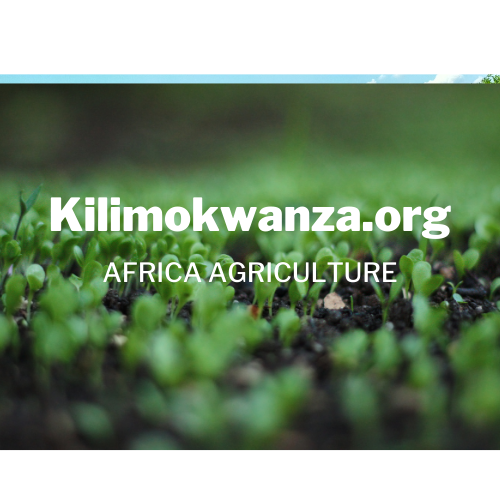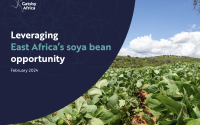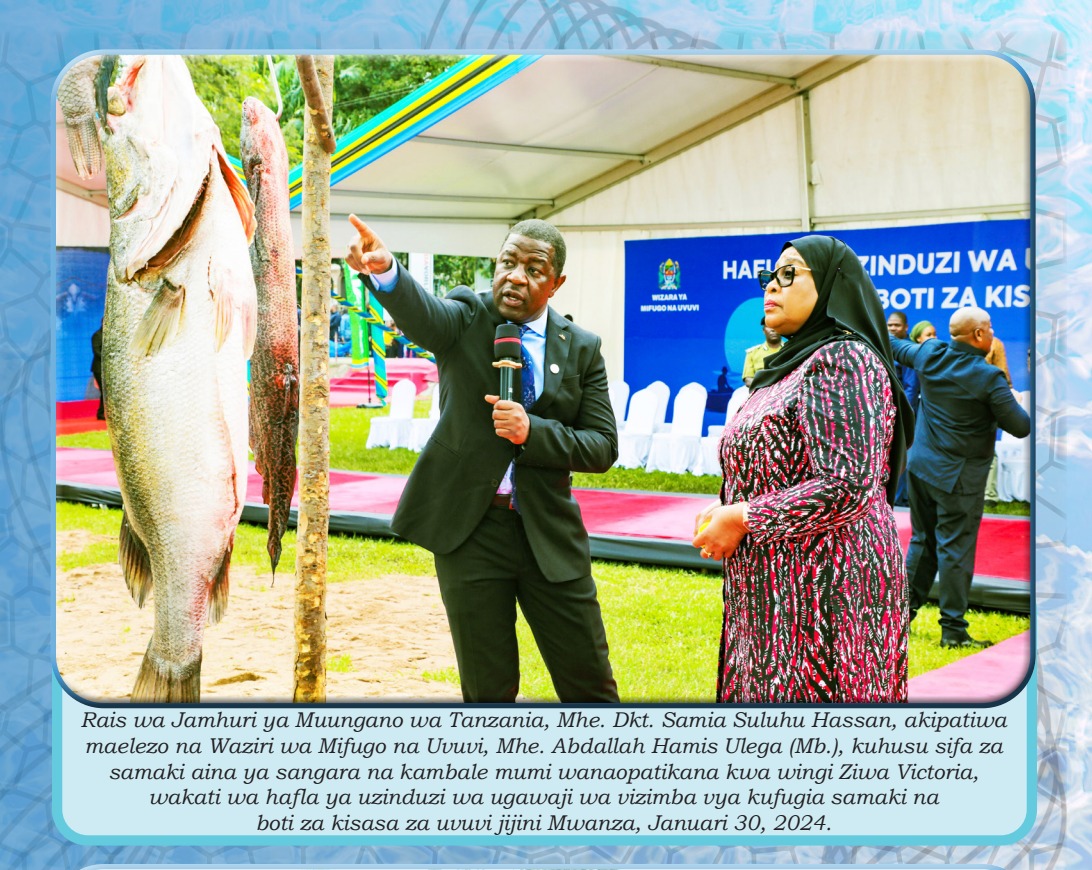Vianey Rweyendela: Catalysing Inclusive and Competitive Agricultural Markets and Trade for Food Systems Transformation in Tanzania Is The Way Forward
The Driving Forces Behind AGRA Tanzania 2023-2027 Strategy
By Anthony Muchoki
Tanzania is at a critical juncture in an era of robust economic growth but equally notable challenges. The nation’s GDP growth has shown commendable resilience, posting an average rate of 6.9 per cent from 2016/17 to 2020/21. With an inflation rate of less than 5 per cent and the nation’s earlier-than-expected achievement of Low Middle-Income Country status in 2020, Tanzania has significant economic accomplishments.
However, Vianey Rweyendela, the Country Manager at AGRA, Tanzania, points out that the global pandemic has considerably impacted this upward trajectory. “We cannot ignore the sobering reality of the situation,” says Rweyendela. “COVID-19 slowed our economic growth, and we must face this challenge head-on.”
In the face of these difficulties, agriculture emerges as a pivotal player. As Rweyendela indicates, “Agriculture is the heart of Tanzania’s economy. It contributes 27 percent of our GDP, earns 24 percent of total export revenues, and provides employment for 65 percent of our population.”
Yet, despite this sector’s significance, Tanzania is wrestling with poverty and malnutrition. “While we take pride in our economic milestones, we cannot overlook that 27 percent of our population lives below the poverty threshold,” Rweyendela reflects. “Equally alarming is the fact that 33 percent of children under 5 are stunted due to malnutrition.”
Rweyendela is particularly concerned about the challenges faced by Tanzania’s younger population when entering the labour market. “Our youth encounter numerous barriers, such as lack of skills and limited access to land and financial services. These barriers impede their ability to participate in and contribute to the agricultural sector fully.”
“Inclusive agricultural markets, competitive trade, and transformation of food systems are not just economic imperatives. They are the means through which we can ensure a vibrant, healthy, and prosperous Tanzania,” noted Rweyendela. “As we navigate through these difficult times, we hold steadfast in our commitment to leverage agriculture for the well-being of our people and the sustainable growth of our nation.”
Diving into the macro-economic indicators, it is evident that agriculture is a central pillar of Tanzania’s economy. “National GDP growth rate stood at 4.9 percent and the agriculture GDP growth rate at 5.4 percent in 2021,” noted Rweyendela.
However, public expenditure in the agriculture sector was a mere 3 percent, according to the BR Report, 2021. “The government recognises the need to address this shortfall, and thus we see an encouraging increase in the Ag Budget from $130M in 2021/2022 to $414M in 2022/2023,” explains Rweyendela.
The importance of the agricultural sector is further underscored by its dominant share in employment and its significant contribution to the national GDP. Rweyendela provides the data: “Agriculture accounts for 66.6 percent of employment, 26.9 percent of the national GDP, and 65 percent of industrial raw materials. Furthermore, 65 percent of our population resides in rural areas, indicating the vast reach of this sector.”
Tanzania also boasts a food self-sufficiency ratio of 120 percent. “We have the potential to produce even more, provided there is increased adoption of seeds, fertilisers, and irrigation,” adds Rweyendela.
However, youth unemployment presents a significant challenge. “Each year, a million young people enter the labour market, but only a quarter of them secure employment,” states Rweyendela. “Moreover, unemployment is higher among young women, with a rate of 14.3 percent compared to 12.3 percent among young men of the same age.”
Rweyendela provides further details on youth participation in the agri-food systems: “Despite the overall high unemployment, 63 percent of rural youth are involved in agri-food systems. However, 56.3 percent of these youths are in vulnerable employment, as of 2019/20.”
To address these issues, several initiatives are in place. “Agenda 10/30 aims to double employment by achieving a growth rate of 10 percent in the sector,” explains Rweyendela. “Moreover, initiatives like BBT-YIA and TAIDF aim to benefit 12,000 youth-led agribusinesses, create 3M jobs, and create jobs for 1M people, mainly women and youth, respectively.”
The government’s III FYDP aims to reduce youth in vulnerable employment from 56.3 percent to 38.3 percent by 2025. Rweyendela identifies priority value chains that the government is focusing on, including maize, rice, cassava, wheat, beans, edible oil crops, dairy, horticulture, poultry, soybean, beef, cashew, and aquaculture.
“In all these endeavours, it’s worth noting that women and youth are particularly attracted to the horticulture sector, with 65-70 percent of them working in this area. We see a future where this dynamic workforce will play a central role in transforming our agriculture,” noted Rweyendela.
“Government priorities for the agricultural sector are diverse and strategically aimed at addressing various challenges in the field,” says Rweyendela. “These include sustainable water and land use management, enhancing the production and productivity of crops, livestock, and fisheries, promoting commercialisation, value addition, trade, and investment, and ensuring resilient food systems and livelihoods.”
As Rweyendela outlines, AGRA priorities encompass sector enablers, coordination, monitoring & evaluation, climate change mitigation, adaptation, biodiversity protection, and the inclusion of youth in agribusiness.
Rweyendela acknowledges the progress made so far regarding the agricultural sector’s performance. “Tanzania is on a path towards agricultural transformation, with increased use of modern inputs, labour productivity and crop production, deepening of linkages between the farm sector and urban markets, and high surplus production of food crops.”
However, he is quick to point out the persistent challenges. “We still grapple with high post-harvest losses, estimated at about 25 per cent for cereal crops and up to 50 percent for fruits and vegetables. Only 20 percent of smallholder farmers use improved inputs. Our fertilizer application averages 19kg/ha, falling short of the 50kg CAADP target. And we need to improve the delivery of extension services.”
Rweyendela also highlights issues related to soil quality and mechanisation, as well as productivity gaps and the need for better supply chain management and policy implementation. In reflecting on the lessons from AGRA 2.0, Rweyendela points out both the positive impacts and shortcomings of the program. “Implementation of the Consortia Model, improving input supply through Village-Based Advisors (VBAs), improved policy and state capability, and a strong contribution to seed systems transformation were all commendable successes,” he states.
On the other hand, he admits that AGRA 2.0 fell short in some areas. “We didn’t provide adequate support to link output markets, and our interventions to improve access to finance need to be strengthened. Furthermore, there is limited evidence that VBAs will be able to establish themselves as rural entrepreneurs. We also observed that increased production of certified seed did not directly translate to increased adoption in some cases,” Rweyendela concludes, emphasising that these lessons will be instrumental in shaping the future strategies of AGRA in Tanzania.
“The next phase of our journey, AGRA 3.0, is already on the horizon,” says Rweyendela. “Our goal is to support Tanzania in building inclusive and competitive markets through value addition and trade. We believe that improving the functionality of markets and trade guarantees efficient allocation of resources for enhancing the productivity of key factors of production, such as land, labour, and capital.”
Rweyendela expresses confidence in AGRA’s experience and capacity to collaborate with Tanzania in achieving these goals. “AGRA has a proven track record in supporting SMEs, piloting the consortia model of service delivery, and championing the trade of agri-food products,” he elaborates.
“Our strong relationship with the Tanzanian government positions us to be an effective partner in this transformative journey. With AGRA 3.0, we aim to leverage our experience and strengths to make a significant contribution to building inclusive and competitive agricultural markets in Tanzania,” Rweyendela
“Under AGRA 3.0, our strategic approach will take a food systems lens and prioritize inclusivity. We aim to create employment opportunities for youth and women in the agricultural value chain,” says Vianey Rweyendela, Country Manager at AGRA, Tanzania. “Our strategy will address all four of AGRA’s business lines: seed systems, sustainable farming, inclusive markets & trade, and policy & state capability. Our entry point, however, will be inclusive and competitive agricultural markets and trade for food systems transformation in Tanzania.”
In implementing AGRA 3.0, the organization intends to ensure an integrated investment approach to promote coordination across its business lines and increase efficiency for better impact. Rweyendela elaborates on some of the interventions the strategy will entail.
“We aim to strengthen market linkages within consortia, linking farmers to supermarkets, aggregators/exporters, processors, and enhancing the capacity of Agri SMEs to add value,” he states. “We also plan to support trade facilitation measures, strengthen business development skills for SMEs, industry associations and cooperatives, prioritize and implement SEEDSAT recommendations that support flagship, and improve sector coordination.”
Rweyendela further adds, “We are committed to increasing access to Early Generation Seeds (EGS) and certified seed of diverse and nutrient-dense crop varieties. We will also be focusing on strengthening mutual accountability, providing support to the Agriculture Sector Development Program (ASDP) II secretariat, supporting the Tanzania Agricultural Industrial Development Fund (TAIDF) coordination by Ministry of Industry and Trade (MIIT), and contributing to the coordination of food systems interventions.”
In terms of policy, AGRA 3.0 plans to engage in advocacy interventions to address policy and regulatory challenges to reduce the cost of trade on inputs and outputs. “We are also keen on scaling climate change effect technologies, such as drought-tolerant varieties and water management systems, and we aim to extend the Village-Based Advisor (VBA) model to other geographies,” Rweyendela concludes.


